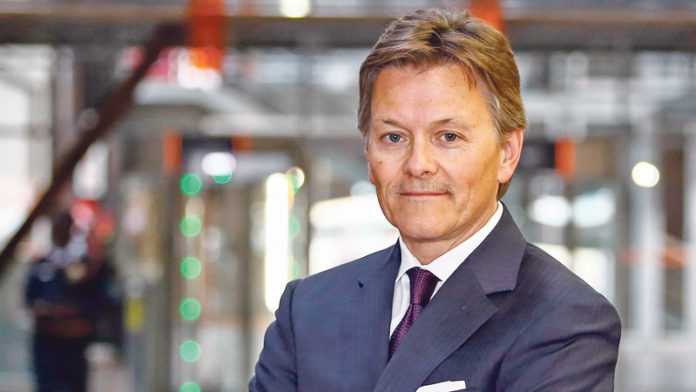
ANGLOGOLD Ashanti CEO, Kelvin Dushnisky, continued to talk up prospects for the Obuasi mine in Ghana in his assessment of the group’s third quarter results which reported strong free cash flows but a jump in overall working costs.
Obuasi is set to resume production with the first gold pour to take place “by year-end” and then ramp up gold production during 2020 to a rate of about 400,00 ounces annually, said Dushnisky.
“The team has made extraordinary progress toward meeting the year-end target of bringing this world-class ore body back into production. The fact that we have generated strong cash flow and improved our balance sheet while making this investment, is testament to the strength of our portfolio.”
Earlier this month Dushnisky told Bloomberg News that “… our Obuasi mine is a spectacular orebody that will be a significant production engine for Ghana and AngloGold for many years to come”.
This assessment is despite Obuasi’s highly troubled track record since AngloGold acquired the mine when it took over Ashanti Goldfields in 2003 to create AngloGold Ashanti.
In 2016, then Randgold CEO, Mark Bristow, walked away from a proposed joint venture with AngloGold on Obuasi while, in August last year, Citigroup analyst, Johann Steyn, queried Obuasi’s future comparing the mine to Gold Fields troubled South Deep operation.
Steyn’s comments were rejected vehemently at the time by then AngloGold CEO, Srinivasan ‘Venkat’ Venkatakrishnan, and AngloGold technical vice-president, Graham Ehm, who said comparing the two mines was “… a real apples-and-oranges comparison”.
Ehm commented: “Certainly, Obuasi has its challenges, but we planned it out. I think we understand what we are doing and I think the comparison with South Deep is not a good way to look at it”.
Dushnisky commented today that: “I could not be more enthusiastic about Obuasi”, but he was far more cautious when asked for details on the process through which AngloGold Ashanti wants to sell its remaining South African assets; in particular the Mponeng mine.
The broad picture given by Dushnisky was that the prospective bidders had completed their due diligence programmes and that “… an update on this process can be expected by the end of the year”. He declined to provide the number of bidders interested in the group’s South African assets or any other details commenting: “… it’s a competitive process and I cannot speak to specifics”.
AngloGold Ashanti’s free cash flow soared to $87m in the September quarter which is more than double the amount made in the comparable quarter of 2018 despite production dropping to 825,000 oz (2018 September quarter – 851,000 oz).
But total cash costs jumped 9% year-on-year to $786/oz for the September quarter while all-in sustaining costs (AISC) were 12% higher at $1,031/oz.
Dushnisky attributed these increases to “… lower production along with inflationary pressures and other factors”.
Speaking on a media conference call this morning, he said he intended to “… keep a tight rein on costs and capital despite the current gold price environment”, and he forecast that both cash and AISC costs would improve in the fourth quarter. Those costs would come down “… on the back of increased production, in line with past trends”.








